-
Home
-
Contributors
-
International
-
Account
-
Information
More From Contributor
- 70 &176;CMaximum operating temperature 70 &176;COperating vibration 2.17 GNon-operating vibration 3.13 GOperating shock 1000 GNon-operating shock 1000 GWidth 22 mm Depth 80 mm Weight 10 g Temperature monitoring & logging N Operating / non-operating shock 1000 GLaunch date Q3'18 Random write (8GB span)220000 IOPSSSD power consumption (idle)0.040 W Sequential reading 1800 MB/s Sequential writing speed 1800 MB/s Status Launched Random read (8GB span)220000 IOPSProduct codename Neptune Harbor ...
- 70 &176;CMaximum operating temperature 70 &176;COperating vibration 2.17 GNon-operating vibration 3.13 GOperating shock 1000 GNon-operating shock 1000 GWidth 22 mm Depth 80 mm Weight 10 g Temperature monitoring & logging N Operating / non-operating shock 1000 GLaunch date Q3'18 Random write (8GB span)220000 IOPSSSD power consumption (idle)0.040 W Sequential reading 1800 MB/s Sequential writing speed 1800 MB/s Status Launched Random read (8GB span)220000 IOPSProduct codename Neptune Harbor ...
- 70 &176;CMaximum operating temperature 70 &176;COperating vibration 2.17 GNon-operating vibration 3.13 GOperating shock 1000 GNon-operating shock 1000 GWidth 22 mm Depth 80 mm Weight 10 g Temperature monitoring & logging N Operating / non-operating shock 1000 GLaunch date 03'18 Random write (8GB span)220000 IOPSSSD power consumption (idle)0.040 W Sequential reading 1500 MB/s Sequential writing speed 1000 MB/s Status Launched Random read (8GB span)90000 IOPSProduct codename Neptune Harbor ...
- 70 &176;CMaximum operating temperature 70 &176;COperating vibration 2.17 GNon-operating vibration 3.13 GOperating shock 1000 GNon-operating shock 1000 GWidth 22 mm Depth 80 mm Weight 10 g Temperature monitoring & logging N Operating / non-operating shock 1000 GLaunch date 03'18 Random write (8GB span)220000 IOPSSSD power consumption (idle)0.040 W Sequential reading 1500 MB/s Sequential writing speed 1000 MB/s Status Launched Random read (8GB span)90000 IOPSProduct codename Neptune Harbor ...
Intel Core I3-10100 Processor 3.6 GHz Box 6 MB
energy efficiency when you don&153;t.nnIntel&174; Hyper-Threading TechnologynnIntel&174; Hyper-Threading Technology (Intel&174; HT Technology) delivers two processing threads per physical core. Highly threaded applications can get more work done in parallel, completing tasks sooner.nnIntel&174; Virtualization Technology (VT-x)nnIntel&174; Virtualization Technology (VT-x) allows one hardware platform to function as multiple &156;virtual&157; platforms. It offers improved manageability by limiting downtime and maintaining productivity by isolating computing activities into separate partitions.nnIntel&174; Virtualization Technology for Directed I/O (VT-d)nnIntel&174; Virtualization Technology for Directed I/O (VT-d) continues from the existing support for IA-32 (VT-x) and Itanium&174;
processor (VT-i) virtualization adding new support for I/O-device virtualization. Intel VT-d can help end users improve security and reliability of the systems and also improve performance of I/O devices in virtualized environments.nnIntel&174; VT-x with Extended Page Tables (EPT)nnIntel&174; VT-x with Extended Page Tables (EPT), also known as Second Level Address Translation (SLAT), provides acceleration for memory intensive virtualized applications. Extended Page Tables in Intel&174; Virtualization Technology platforms reduces the memory and power overhead costs and increases battery life through hardware optimization of page table management.nnIntel&174; 64nnIntel&174; 64 architecture delivers 64-bit computing on server, workstation, desktop and mobile platforms when combined with
supporting software.&185; Intel 64 architecture improves performance by allowing systems to address more than 4 GB of both virtual and physical memory.nnInstruction SetnnAn instruction set refers to the basic set of commands and instructions that a microprocessor understands and can carry out. The value shown represents which Intel&153;s instruction set this processor is compatible with.nnInstruction Set ExtensionsnnInstruction Set Extensions are additional instructions which can increase performance when the same operations are performed on multiple data objects. These can include SSE (Streaming SIMD Extensions) and AVX (Advanced Vector Extensions).nnIdle StatesnnIdle States (C-states) are used to save power when the processor is idle. C0 is the operational state, meaning that the CPU is
doing useful work. C1 is the first idle state, C2 the second, and so on, where more power saving actions are taken for numerically higher C-states.nnEnhanced Intel SpeedStep&174; TechnologynnEnhanced Intel SpeedStep&174; Technology is an advanced means of enabling high performance while meeting the power-conservation needs of mobile systems. Conventional Intel SpeedStep&174; Technology switches both voltage and frequency in tandem between high and low levels in response to processor load. Enhanced Intel SpeedStep&174; Technology builds upon that architecture using design strategies such as Separation between Voltage and Frequency Changes, and Clock Partitioning and Recovery.nnThermal Monitoring TechnologiesnnThermal Monitoring Technologies protect the processor package and the system
from thermal failure through several thermal management features. An on-die Digital Thermal Sensor (DTS) detects the core's temperature, and the thermal management features reduce package power consumption and thereby temperature when required in order to remain within normal operating limits.nnIntel&174; Identity Protection TechnologynnIntel&174; Identity Protection Technology is a built-in security token technology that helps provide a simple, tamper-resistant method for protecting access to your online customer and business data from threats and fraud. Intel&174; IPT provides a hardware-based proof of a unique user&153;s PC to websites, financial institutions, and network services; providing verification that it is not malware attempting to login. Intel&174; IPT can be a key
component in two-factor authentication solutions to protect your information at websites and business log-ins.\n\n\n\nProduct ID: BX8070110100\n\nProduct Family: Core\n\nProduct Series: i3\n\nModel: i3-10100\n\n\n\n\n\n\n\n\n\n\n\n\n\n
- External links may include paid for promotion
- Availability: In Stock
- Supplier: Transparent Communications
- SKU: 4602389
Product Description
Intel&174; Optane&132;&162; Memory Supportednn Intel&174; Optane&132;&162; memory is a revolutionary new class of non-volatile memory that sits in between system memory & storage to accelerate system performance & responsiveness. When combined with the Intel&174; Rapid Storage Technology Driver, it seamlessly manages multiple tiers of storage while presenting one virtual drive to the OS, ensuring that data frequently used resides on the fastest tier of storage. Intel&174; Optane&132;&162; memory requires specific hardware & software configuration.nn Intel&174; Turbo Boost Technologynn Intel&174; Turbo Boost Technology dynamically increases the processor's frequency as needed by taking advantage of thermal & power headroom to give you a burst of speed when you need it, & increased energy efficiency when you don&153;t.nn Intel&174; Hyper-Threading Technologynn Intel&174; Hyper-Threading Technology (Intel&174; HT Technology) delivers two processing threads per physical core. Highly threaded applications can get more work done in parallel, completing tasks sooner.nn Intel&174; Virtualization Technology (VT-x)nn Intel&174; Virtualization Technology (VT-x) allows one hardware platform to function as multiple &156;virtual&157; platforms. It offers enhanced manageability by limiting downtime & maintaining productivity by isolating computing activities into separate partitions.nn Intel&174; Virtualization Technology for Directed I/O (VT-d)nn Intel&174; Virtualization Technology for Directed I/O (VT-d) continues from the existing support for IA-32 (VT-x) & Itanium&174; processor (VT-i) virtualization adding new support for I/O-device virtualization. Intel VT-d can help end users improve security & reliability of the systems & also improve performance of I/O devices in virtualized environments.nn Intel&174; VT-x with Extended Page Tables (EPT)nn Intel&174; VT-x with Extended Page Tables (EPT), also known as Second Level Address Translation (SLAT), provides acceleration for memory intensive virtualized applications. Extended Page Tables in Intel&174; Virtualization Technology platforms reduces the memory & power overhead costs & increases battery life through hardware optimization of page table management.nn Intel&174; 64nn Intel&174; 64 architecture delivers 64-bit computing on server, workstation, desktop & mobile platforms when combined with supporting software.&185; Intel 64 architecture improves performance by allowing systems to address more than 4 GB of both virtual & physical memory.nn Instruction Setnn An instruction set refers to the basic set of commands & instructions that a microprocessor understands & can carry out. The value shown represents which Intel&153;s instruction set this processor is compatible with.nn Instruction Set Extensionsnn Instruction Set Extensions are additional instructions which can increase performance when the same operations are performed on multiple data objects. These can include SSE (Streaming SIMD Extensions) & AVX (Advanced Vector Extensions).nn Idle Statesnn Idle States (C-states) are used to save power when the processor is idle. C0 is the operational state, meaning that the CPU is doing useful work. C1 is the first idle state, C2 the second, & so on, where more power saving actions are taken for numerically higher C-states.nn Enhanced Intel Speed Step&174; Technologynn Enhanced Intel Speed Step&174; Technology is an advanced means of enabling high performance while meeting the power-conservation needs of mobile systems. Conventional Intel Speed Step&174; Technology switches both voltage & frequency in tandem between high & low levels in response to processor load. Enhanced Intel Speed Step&174; Technology builds upon that architecture using design strategies such as Separation between Voltage & Frequency Changes, & Clock Partitioning & Recovery.nn Thermal Monitoring Technologiesnn Thermal Monitoring Technologies protect the processor package & the system from thermal failure through several thermal management features. An on-die Digital Thermal Sensor (DTS) detects the core's temperature, & the thermal management features reduce package power consumption & thereby temperature when required in order to remain within normal operating limits.nn Intel&174; Identity Protection Technologynn Intel&174; Identity Protection Technology is a built-in security token technology that helps provide a simple, tamper-resistant method for protecting access to your online customer & business data from threats & fraud. Intel&174; IPT provides a hardware-based proof of a unique user&153;s PC to websites, financial institutions, & network services; providing verification that it is not malware attempting to login. Intel&174; IPT can be a key component in two-factor authentication solutions to protect your information at websites & business log-ins.\n\n\n\n Product ID: BX8070110100\n\n Product Family: Core\n\n Product Series: i 3\n\n Model: i 3-10100\n\n\n\n\n\n\n\n\n\n\n\n\n\n
Reviews/Comments
Add New
Intelligent Comparison
Price History
We couldn't find any historical pricing!
Vouchers
Do you know a voucher code for this product or supplier? Add it to Insights for others to use.


 United Kingdom
United Kingdom
 France
France
 Germany
Germany
 Netherlands
Netherlands
 Sweden
Sweden
 USA
USA
 Italy
Italy
 Spain
Spain





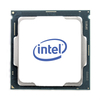
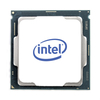
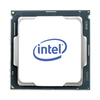
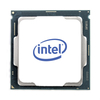
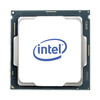












 Denmark
Denmark